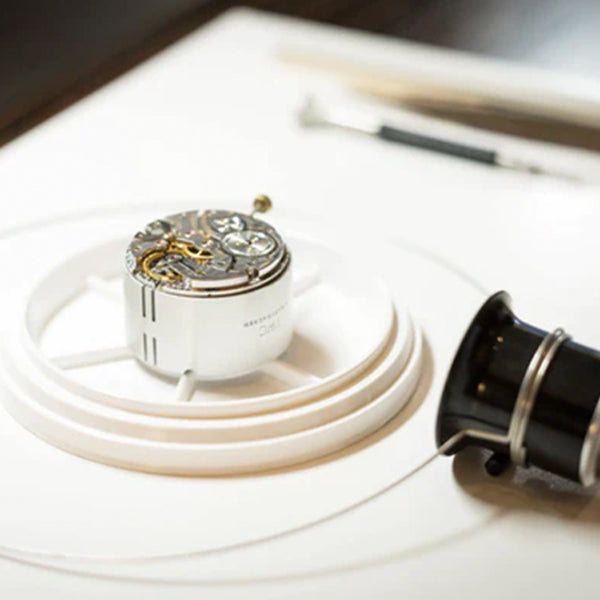
The world of watchmaking is complex, often highly technical, and sometimes just downright confusing to anyone trying to understand for the first time. At the core of wristwatches are two foundational movement types, quartz and mechanical. Each type has distinct forms and specific advantages, but ultimately, they serve the same purpose, to power the machine on your wrist which orients you to the time in whatever place you are currently. Let’s explore each type of movement.

Quartz Movement
The quartz movement is the newer of the two major movements, with the first mass-produced quartz movement introduced by Seiko in 1969. The foundations of the movement are thoroughly modern, a battery sends an electric current through a quartz crystal, causing it to vibrate. This vibration causes oscillation in the movement and drives the motor. The genius of the movement is that the vibration of the quartz is so exact that the remainder of the movement can be made to respond to the precise number of oscillations each second, nearly guaranteeing perfect timekeeping. The quartz movement is easier to produce in high quantities, requires minimal maintenance, and can continue to run for weeks and months without being wound or worn thanks to the power of the battery.
Mechanical Movement
History, legacy, craftsmanship. Think of the nostalgic terms that describe any great endeavor and you can likely use them to describe the history of watchmaking, and therefore the mechanical movement. A complex interaction of parts that help to move a mechanism at a consistent speed to turn the hands on a face and tell the time. The power comes not from a battery, but from a tightly wound spring. The spring can be wound by either dynamic movement or by a manual process. Winding by dynamic movement, the movement of your wrist throughout the course of your normal day, is a special type of mechanical movement, known as an automatic movement.
Automatic movements are a popular choice for those looking for an everyday wear wristwatch. Traditional mechanical movements are wound, with a power reserve being the length of time before the spring no longer produces power to the movement. Winding a movement can vary based on the watch, but is often performed by pulling the crown out to a specific point and rotating it to increase tension on the spring. Once the watch is wound, the crown is pressed back into place and the spring begins to slowly unwind, metering out power to the remainder of the watch movement. The general technology of the mechanical movement has remained the same for generations, but modern manufacturing and technological innovations have led to exceedingly higher levels of engineering, making a mechanical timepiece much more accurate than those produced in the past.
Quartz vs. Mechanical
Having now explained both types of movements, the question arises, which is better? The answer, as with most things in life, is that it depends. Many people looking for an everyday wristwatch with minimal upkeep opt for a quartz movement. The precision of a technologically produced movement allows for a lower production cost. Each movement can be made exactly the same, driving down the overall price of a wristwatch. There is no need for daily winding, and the general maintenance of a quartz movement is usually handled with a battery change and cleaning every few years. If, however, you are looking for a heritage piece, which could make an amazing heirloom, or an incredible conversation starter, a mechanical movement may be more your speed. Requiring regular maintenance, a mechanical wristwatch never needs a battery, and if cared for properly, will outlast most owners. These timepieces tend to be more expensive, and exclusive, but hold their value well over time and are perfect for those attracted to the finer things in life.
Whether you think you may want a quartz, mechanical, or automatic movement, the most important thing to consider is your own opinion. If you are happy with your choice, it will show. Ready to discuss your first, or next, timepiece? Come see our experts who are happy to share their favorites, and find something that will work for whatever your lifestyle necessitates.


